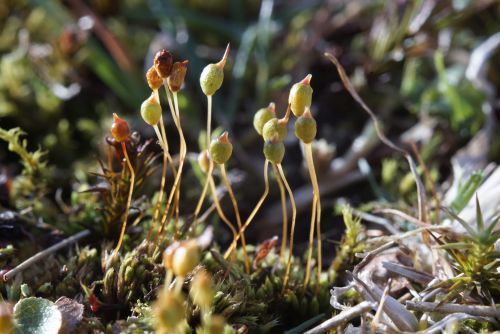Rediscovering a fifty-year old article prompted us to explore RBGE’s last half-century at the forefront of science, conservation, horticulture and learning.
2020 will inevitably go down in history as the year of the Covid-19 Pandemic. Before the novel coronavirus emerged, however, 2020 was designated a Super Year for Nature as we seek to resolve the Climate Emergency and Biodiversity Crisis. Both the Aichi Biodiversity Targets and the targets of the Global Strategy for Plant Conservation are due to be reported on by the end of the year. 2020’s critically important Conference of the Parties (COP) meetings in China (COP 15 to the Convention on Biological Diversity) and the UK (COP 26 of the United Nations Framework Convention on Climate Change) will be even more urgent when they finally take place in 2021.
2020 also marks the 350th anniversary of the Royal Botanic Garden Edinburgh (RBGE). One of RBGE’s scientists, Peter Wilkie, recently alerted me to a yellowing article from Nature, the world’s leading multidisciplinary science journal, written to mark our 300th anniversary in 1970, by legendary botanist and cerrado specialist, Jimmy Ratter.
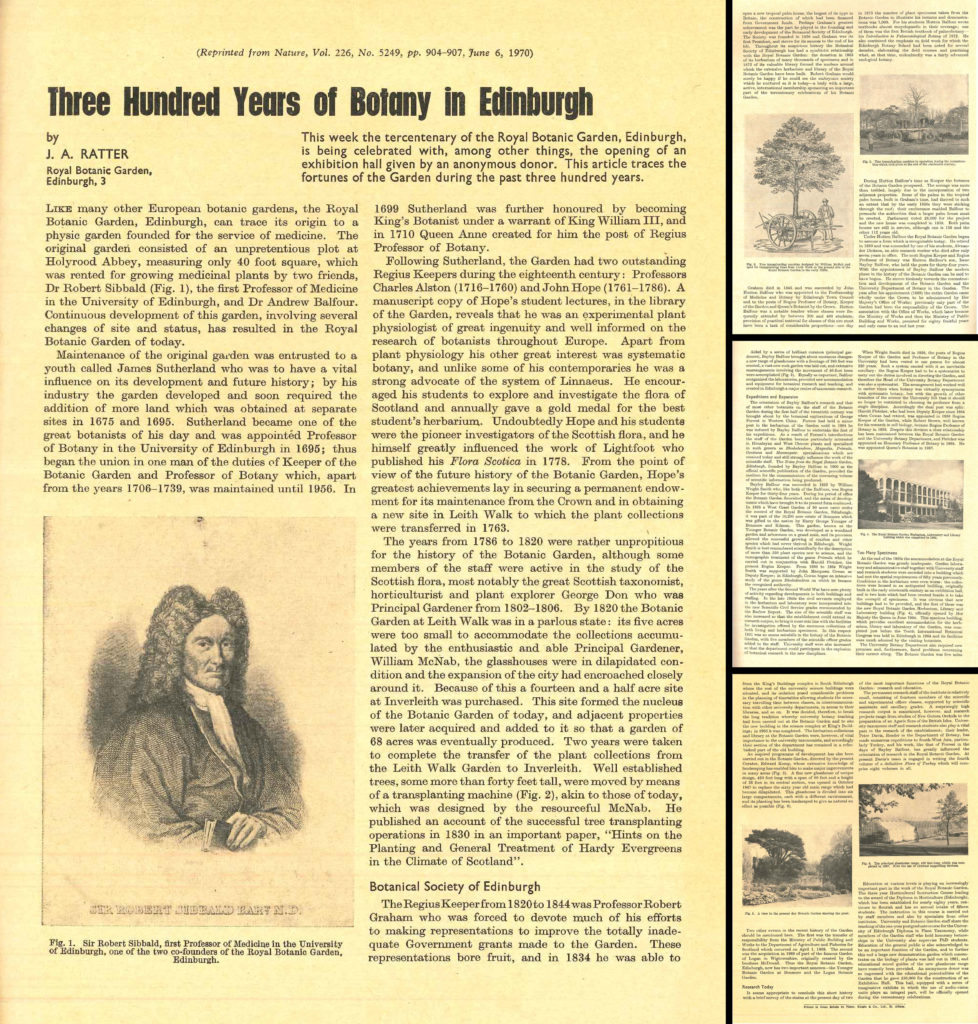
The four-page article describes the origins of the ‘Botanics’ as a physic garden serving medical students and apothecaries in seventeenth-century Holyrood, not long wracked by the Great Edinburgh Plague of 1645. Jimmy takes the reader through the Garden’s eminent Regius Keepers (Directors), including James Sutherland and John Hope, John Hutton Balfour and his son Isaac Bayley Balfour, William Wright Smith and Harold Fletcher, and its sequence of moves around the city until it alighted in its present location, at Inverleith. He describes the founding of the Botanical Society of Edinburgh, the origins of the three-million strong herbarium and botanical library, and the construction of glasshouses accommodating everything from tropical palms to montane rhododendrons, cacti, ferns, the giant waterlily and the famous titan arum.
Jimmy’s article also details the expeditions of the Garden’s most famous and prolific collector, George Forrest, and the acquisition of diverse collections at Benmore and Logan (later joined in 1979 by Dawyck). He outlines the research priorities of the Botanics’ scientists in 1970: from New Guinea orchids to the agaric fungi of the British Isles, with a strong fieldwork focus in southwest Asia, particularly Turkey. In 1970, as now and indeed as in 1670, formal and informal education were priorities, with programmes ranging from diplomas to PhDs, a public demonstration garden and new exhibition hall.
Five decades and five Regius Keepers later, RBGE’s work is still published in Nature: two key papers this year explored the decreasing capacity of the world’s rainforests to sequester carbon and catalogued the plant life of New Guinea, establishing it as the world’s richest island flora. In the age of molecular biology, genomics and gene-editing, and in a world facing challenges from emerging diseases and the climate emergency to food security and the biodiversity crisis, the Garden’s work is more vital and relevant than ever.
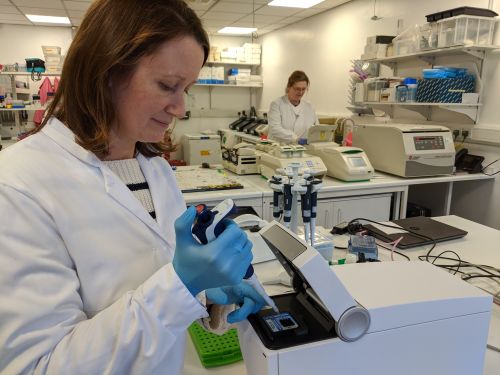
Our baseline discovery science, describing species new to science at a rate of more than one a week, underpins a wide range of research and conservation activities.
One of the most significant changes in biology over the past fifty years has been the advent of DNA sequencing technology and with it, genetic and genomic approaches to biodiversity science. RBGE embraced these advances from the onset, publishing DNA-based studies of plant relationships in the 1990s and, in 2006, becoming the first major herbarium in the world to arrange its collection according to a molecular-phylogenetic system.
In 2009, researchers at RBGE led a global collaborative effort to develop a core set of DNA barcodes for land plants and to build large-scale ‘libraries’ of verified DNA sequences supporting species discovery and plant identification, even for morphologically-indistinguishable species. Together with the National Botanic Garden of Wales, we successfully generated DNA barcodes for all UK flowering plants. Most recently, in 2019, RBGE helped found a ground-breaking programme, the ‘Darwin Tree of Life,’ led by the Wellcome Sanger Institute, aiming ultimately to sequence the genomes of all 60,000 species of complex life in Britain and Ireland. Our foci are the ferns, bryophytes, lichens and Scottish flowering plants, for which sequenced genomes will provide unprecedented knowledge of evolution, ecology, conservation and potential uses.
Of course, RBGE’s discovery science still encompasses the field as well as the lab, with active collaborative projects in over 35 countries from Saudi Arabia to Sri Lanka, Peru to Papua New Guinea, including some of the most species-rich parts of the world. As Jimmy outlined, the Garden’s Chinese collections, stemming from George Forrest’s early twentieth century expeditions, are particularly comprehensive. In 2001 this long-term relationship with China was cemented in founding, with Kunming Institute of Botany, the UK’s first joint laboratory in China: Lijiang Alpine Botanic Garden (LABG). In species-rich Yunnan, LABG now hosts active research ranging from palaeobotany through pollination ecology to the impacts of present-day land use change, and is an important milestone in RBGE’s relationship with this strategically important and highly biodiverse nation.
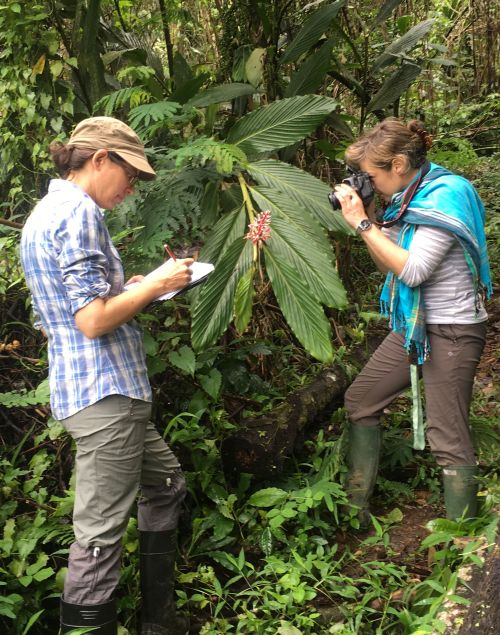
Biodiversity research around the world relies upon comprehensive floristic and monographic publications. RBGE has contributed significantly to the Flora of Turkey, completed in 1985 with supplements in 1988 and 2001. In 2002, we finished the Flora of Bhutan, the first Flora of this fascinating country, covering 230 families in nine volumes, with descriptions, keys and illustrations. A decade later, as part of a worldwide collaborative effort, we accomplished the fifty volumes of the 31,000 species Flora of China, in English and Chinese. Working with the government of Nepal’s Department of Plant Resources, Tribhuvan University, Kathmandu, the Nepal Academy of Science and Technology, and the University of Tokyo, RBGE now coordinates the Flora of Nepal. RBGE staff also collaborate with researchers across the world on a range of other Floras including those of Arabia, Thailand, Singapore, Peninsular Malaysia, and Cambodia, Laos and Vietnam.
Increasingly, disseminating accurate biodiversity data to researchers around the world also relies on the internet. RBGE is a founding member of the World Flora Online, launched in 2012, which will become a complete and accessible baseline for monitoring plant species, and an essential first step in meeting the targets of the Global Strategy for Plant Conservation.
As we face the twin challenges of the biodiversity crisis and climate emergency, translating scientific evidence into impactful conservation action has never been more important.
Over the past fifty years, we have supported active conservation and restoration efforts across the world. In Chile, working with Rainforest Concern and Chilean NGO Fundación FORECOS we jointly founded a 1,200-hectare reserve—Reserva Nasampulli—to conserve primary Araucaria forest. Across the globe in Laos we helped establish a restoration programme and protected area for one of the world’s rarest conifers, the Critically Endangered mai hing sam (Glyptostrobus pensilis), in collaboration with the University of San Francisco, Nakai Nam Theun Watershed Management Protection Authority and Nam Theun Power Company. In Bhutan, we worked with local botanists and conservationists on an intensive programme to protect the sacred national tree, Himalayan cypress (tsenden), Cupressus torulosa, from unsustainable logging, by establishing a community tree nursery to create a sustainable timber supply, relieving pressure on natural forests. In 2017-2018, an astounding 41,000 tsenden seedlings were planted across the Dangchu Valley, where they are now protected.
Conservation assessment (‘Red Listing’) is a crucial tool enabling us to identify and protect species most at risk. Our International Conifer Conservation Programme (ICCP; https://twitter.com/RBGE_ICCP), a vital scheme founded in 1991 to combine scientific and horticultural research with international capacity-building in more than 50 countries, coordinates the IUCN Conifer Specialist Group and Conifer Red List and runs the website Threatened Conifers of the World. Other RBGE staff sit on the IUCN Global Tree Specialist Group and are delivering conservation assessments for the estimated 1,200 species of tropical trees in the family Sapotaceae. Our Centre for Middle Eastern Plants, established in 2009, has assessed the conservation status of over 95% of the endemic and regionally important plants of Arabia. We also manage the Global Conservation Consortium for Rhododendron, established by Botanic Gardens Conservation International, which brings together scientists, horticulturists and conservationists to promote and facilitate in situ and ex situ conservation of these often threatened species.
Closer to home, our Scottish Rare Plants Programme (https://twitter.com/PlantsRbge), founded in 1991, has secured the future of 156 rare natives (making Scotland one of the first countries to surpass Target 8 of the Global Strategy for Plant Conservation, which calls for at least 75% of threatened plant species to be held in ex situ collections). These include the woolly willow (Salix lanata), alpine-blue sowthistle (Cicerbita alpina), Arran whitebeam (Sorbus arranensis)and oblong woodsia (Woodsia ilvensis), for all of which we run active ex situ and in situ conservation, restoration and reintroduction programmes.
Human impacts threaten not only species but also whole ecosystems. In 2016, scientists from RBGE, Argentina, the Bahamas, Brazil, Colombia, Cuba, Ecuador, Jamaica, Mexico, Peru, Puerto Rico, Spain, St. Lucia, Trinidad and Tobago, the USA, Venezuela and across the UK documented, for the first time, the conservation importance of South America’s seasonally dry tropical forest biome, in a landmark paper in Science. A year later RBGE and scientists from Brazil, Colombia, England, Spain and the USA co-authored the first taxonomically-verified checklist of the plants of the neighbouring Amazon rainforest biome—more than 14,000 species—providing a sound basis for research and conservation in one of the world’s most important biodiversity hotspots. In 2010 researchers from RBGE, TRAFFIC-Tanzania, the World Wildlife Fund and the Universities of Aberdeen, Cambridge, Copenhagen, Dar es Salaam, Leeds, Princeton and York showed that tropical forest degradation can be modelled and predicted, documenting waves of exploitation radiating from Dar es Salaam, Tanzania. In continental South East Asia, RBGE and researchers from China, Singapore and the USA calculated that more than half of rubber plantations may be unsustainable: a loss-loss scenario in which catastrophic losses for biodiversity occur without sustainable benefits for farmers and landowners.
RBGE is involved with a wide range of capacity-building programmes in some of the most biodiverse parts of the world. Working in collaboration with local researchers and institutes, we help build the knowledge, skills and networks needed for countries to protect and restore their species and habitats, vital to the global battle against the climate emergency and biodiversity crisis. Central to many of these programmes is our flagship international qualification, the Certificate in Practical Horticulture (CPH). For example, at Mexico’s Jardin Botanico Francisco Javier Clavijero, 18 staff and students achieved the CPH and 14 went on to pass as CPH Assessors, giving the garden a strong skills base in collections management, horticulture and arboriculture and enabling it to raise funds from running its own training courses in future. At Kulob Botanical Garden, Tajikistan, we trained 24 staff in skills to support conservation of valuable heritage fruit tree varieties threatened by unsustainable planting of European cultivars. This laid the foundations for a new three-year DEFRA Darwin Initiative project building further capacity in cultivation techniques, increasing income for local farmers, and improving access to local produce. In Nepal, from 2016-2019 Bhaskar Adhikari, a Nepalese national now employed at RBGE, headed up a Darwin Initiative project in collaboration with multiple local agencies working with over 3,750 people to address the issue of invasive non-native species: this project grew local scientific knowledge, raised awareness, and built capacity to remove invasive plants, reclaiming land for sustainable, native, economic plantings and simultaneously providing a source of bio-char to improve soil fertility and crop yields, and charcoal, fuelling cleaner cooking. Bhaskar is now running a new project to enhance biodiversity and livelihoods through uprating community forest management in Jalthal, Nepal, again working with local institutes.
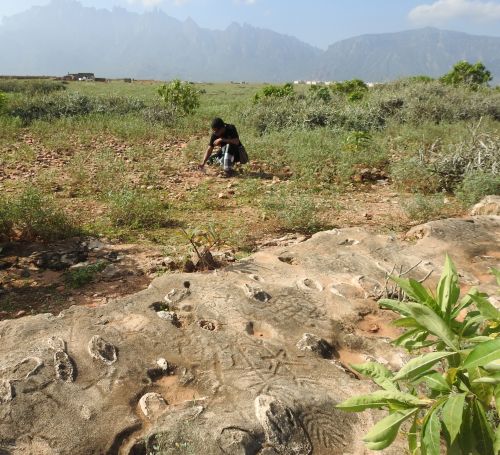
Human activity including international trade, coupled with a warming climate, presents a growing threat to biodiversity from plant pests and pathogens. In 2018, we jointly founded Scotland’s Centre for Expertise in Plant Health; as its Horticulture and Natural Environment lead, we initiated one of the world’s most rigorous plant health programmes, crucial to protecting Scotland’s natural environment, horticultural and agricultural sectors from potentially devastating emerging diseases. The 2020 issue of our in-house journal Sibbaldia (the world’s first peer-reviewed international journal of botanic garden horticulture) is dedicated to the emerging and crucial discipline of plant health.
Education and engagement—now more than ever—are vital and continually-evolving strands of our work.
One of the most significant developments in our education programme has been the creation of a new MSc course in Biodiversity and Taxonomy of Plants with the University of Edinburgh, in 1992. More than 350 students from 49 countries have graduated the course; 85% of them are now studying further or employed, often in influential roles in plant science and conservation. You can read more about the impact of the MSc in Zoë Goodwin’s Botanic Stories post. We also have around 25 PhD students, at present drawn from 15 countries around the world. In 2012 we launched a new online learning space, PropaGate, delivering everything from free topical tasters to professional programmes. It is currently accessed by over 1450 learners from over 50 countries—a marked expansion of our reach beyond our on-site capacity.
We play a leading role in motivating and supporting citizens to reduce carbon emissions and sustain and enhance biodiversity, through education and engagement with our 10,000 Members and one million annual visitors. Read more about our work to combat the climate emergency here. Our wide-ranging arts programme engages visitors with plants and the environment in many innovative ways. For instance, our recent ‘Think Plastic’ exhibition invited visitors to reconsider their relationship with this oft-controversial material through beautiful art installations.
Now, more than ever, we provide a vital support for the health and wellbeing of Scotland’s people. All four of our Gardens provide essential peaceful, green spaces, enhancing visitors’ connection to the natural world. At our Edinburgh Garden, the Botanic Cottage (rebuilt stone-by-stone in 2016 from material salvaged from our previous site at Leith Walk) is a thriving community hub, supporting around 5,000 people each year including minority ethnic groups, refugees, disadvantaged families, the autistic community and those living with learning disabilities, dementia, Parkinson’s disease and mental health issues. Our Edible Gardening Project, supported by the players of the People’s Postcode Lottery, benefits over 7,000 people each year: community gardeners and volunteers work with a range of disadvantaged groups to build practical, hands-on horticultural experience, a sense of worth, inclusion and belonging, and enhanced social cohesion. Later in 2020 we open our new Garden of Tranquillity, providing a safe, peaceful, sensory greenspace for people with dementia, their friends, families and carers to experience the therapeutic benefits of the outdoors.
Our engagement also extends well beyond the Garden boundary. For example, as a founding partner of the collaborative Edinburgh Living Landscape programme, we initiated an integrated network for nature across the city, enhancing the health, happiness and wellbeing of Edinburgh’s people and biodiversity. Programmes included a ‘Square metre for butterflies,’ in which we worked with local schools, businesses and the Prison Service to deliver green roofs planted with pollinator-friendly species; our Edinburgh Shoreline project helped coastal communities explore their relationship with the sea and find ways to solve the challenges facing both the people and biodiversity of the shore.
Further afield still, the Botanics plays a key role in building Scotland’s international profile, commitments and linkages. Our reports and briefings provide evidence-based scientific advice to the Scottish Government on policy areas ranging from biodiversity conservation and the climate emergency, to species reintroductions and translocations, plant health and food security, and feed into global policies and initiatives. Our high-level and long-standing yet personal links with scientific institutions, governments and senior diplomats around the world cement and amplify Scotland’s place on the world stage. In addition to our existing memoranda, we recently signed new cooperation agreements with countries including Chile, China, the Czech Republic, Qatar and Russia. Last but not least we help Scotland meet its commitments to vital global agreements, such as the Convention on Biological Diversity and the UN Sustainable Development Goals.
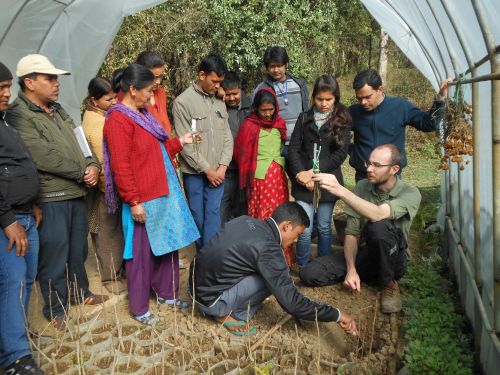
Moving forward in connection: from local to global.
With one-fifth of the world’s plants threatened with extinction, RBGE is at the frontline of the battle to protect life on Earth, from Scotland to the tropics. Our ambitious new Edinburgh Biomes development, considered one of the most significant projects in all our 350-year history, will protect the globally-important plant collections we curate—preventing the potentially catastrophic loss of specimens of over 4,000 species—enhance our visitor experience, and deliver world-leading facilities supporting education and public engagement activities.
Looking to the next half-century, our key focus is on providing quality scientific data and highly relevant and impactful analysis supporting a robust response to climate change and the biodiversity crisis. Our biodiversity scientists will continue to work with researchers around the world to document the status of species and habitats worldwide, enabling them to be monitored and protected from human impacts. Our conservation activities, in Scotland and around the world, will promote a biodiversity-rich environment crucial to carbon sequestration, ecosystem resilience and human survival.
The scale of the challenge that confronts this generation is global: none of us is immune. And the solutions too need to be global, inclusive, and collaborative. As the examples above show, over the decades RBGE has developed strong, equitable relationships with partner organisations around the world, from local cooperatives to research institutes, botanic gardens to government departments. The last fifty years have seen remarkable scientific advances and unprecedented levels of global change; the next fifty years promise to be even more extraordinary.
